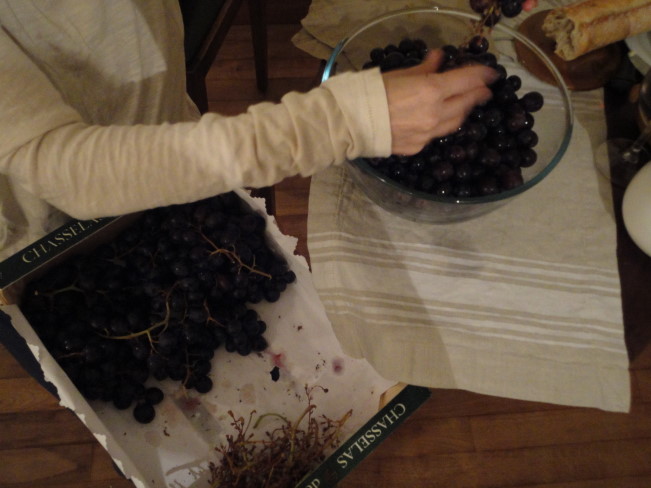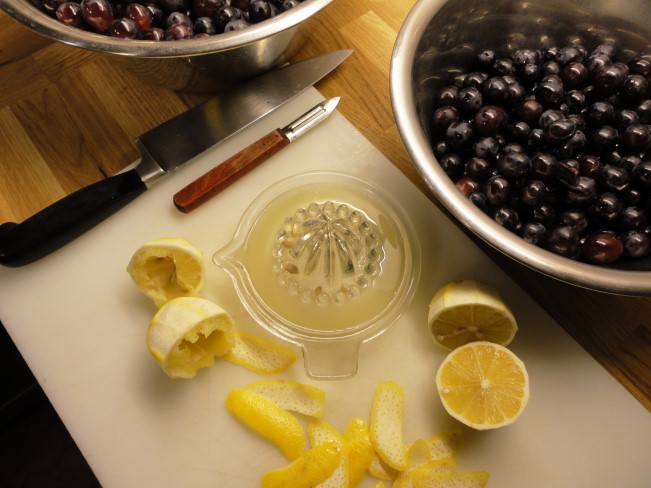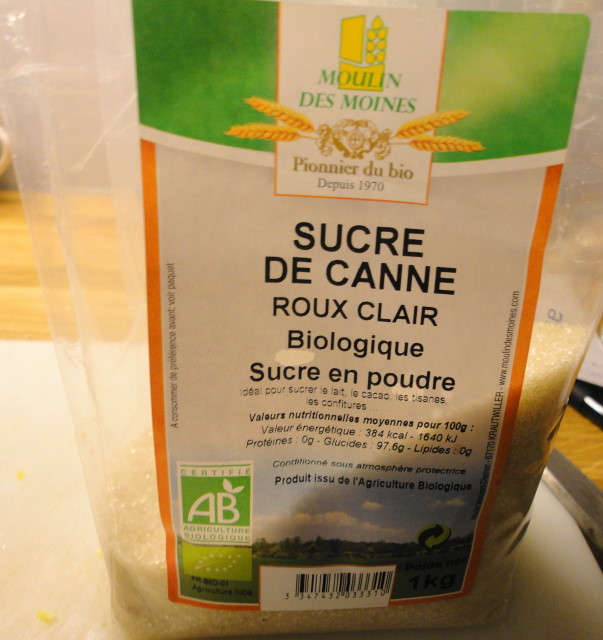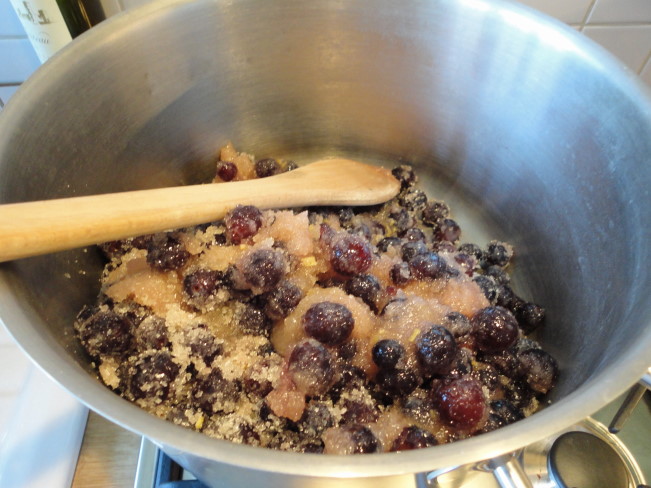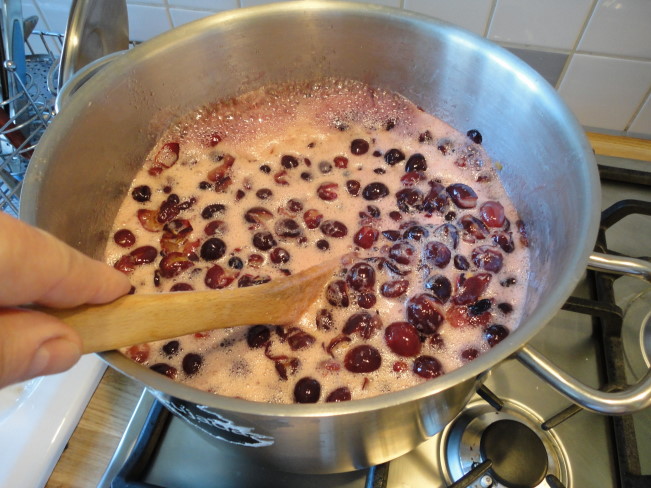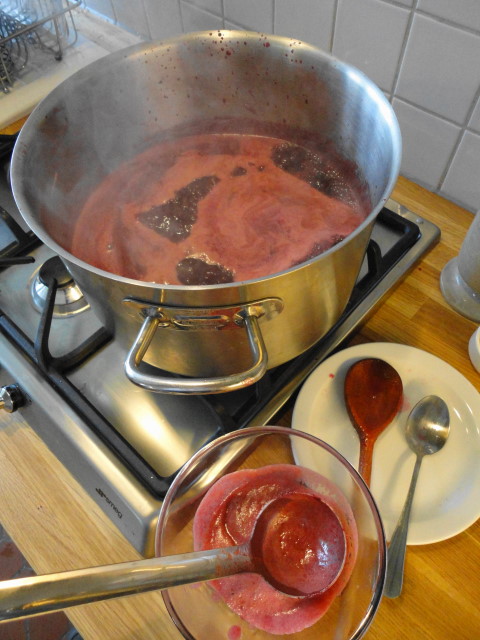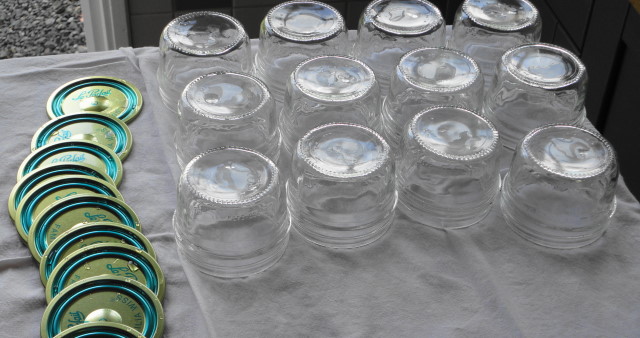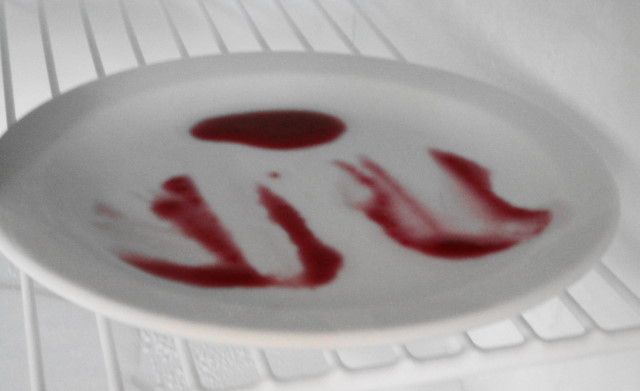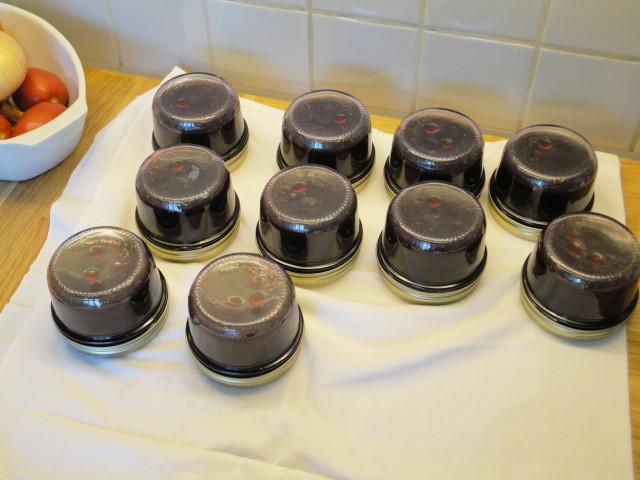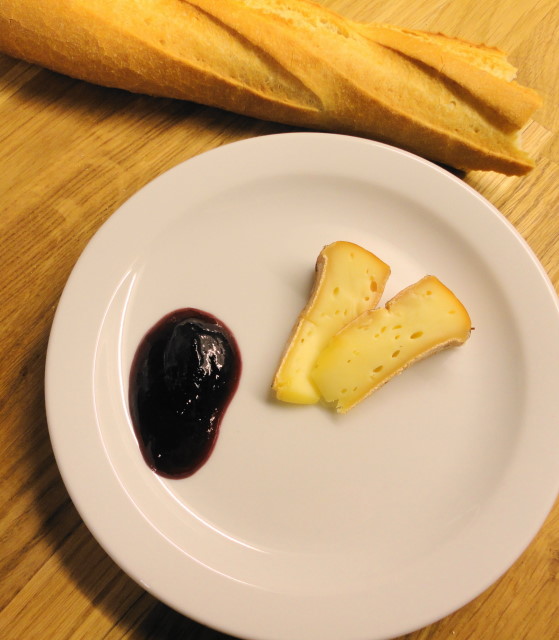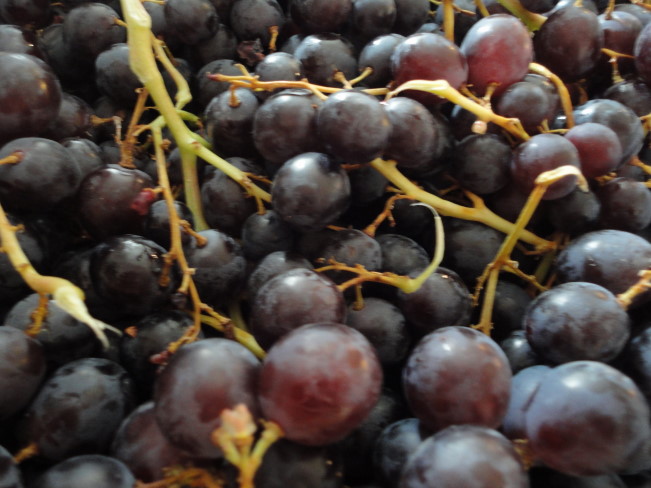
Fall in the Béarn is different than any weather I have experienced before. Sure there is rain, even violent rain, but there are also interludes of intense golden sunlight and clear blue skies between the towering storm clouds. And the temperature jumps between 85 and 60 degrees as the fronts pass quickly over in succession. Its not Seattle, that’s for sure.
The longer hot season here is reflected in the market stalls…tomatoes, peppers, and figs are still well represented. But that doesnt mean that fall has not yet arrived. Grapes, an important crop in the southwest, both for wine and for the table are everywhere, on every farm stand as well as in the the farm trailers pulled behind tractors toward the local wine cooperative.
The table grapes are mostly the white Chasselas or Muscat red and white. All three are very sweet and eat well, but I prefer the Muscat for its higher acid level, that makes it more lively (“vif”) on the tongue and a better foil with cheese.
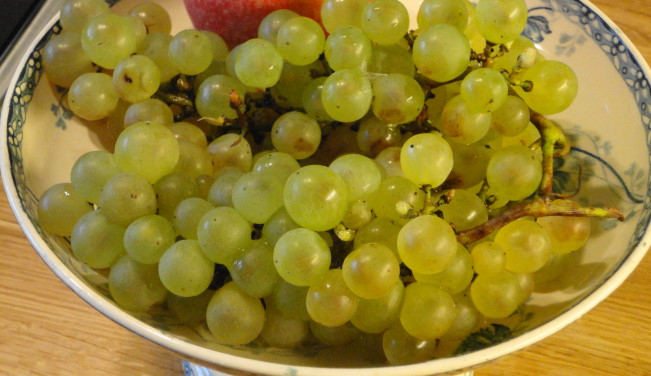
Inspired by a dessert I enjoyed in an Orthez restaurant – Mousse au lait et sa confiture de raisins…milk mousse with red grape jam – I decided to try my hand at grape jam (by the way, if milk mousse with grape jam doesn’t strike you as an appealing dessert, I must beg to differ…this was really good). Which brings me to a question: why is it that there is only grape jelly in the U.S. and not grape jam? Anyone any ideas? Maybe there is grape jam and I just haven’t seen it.
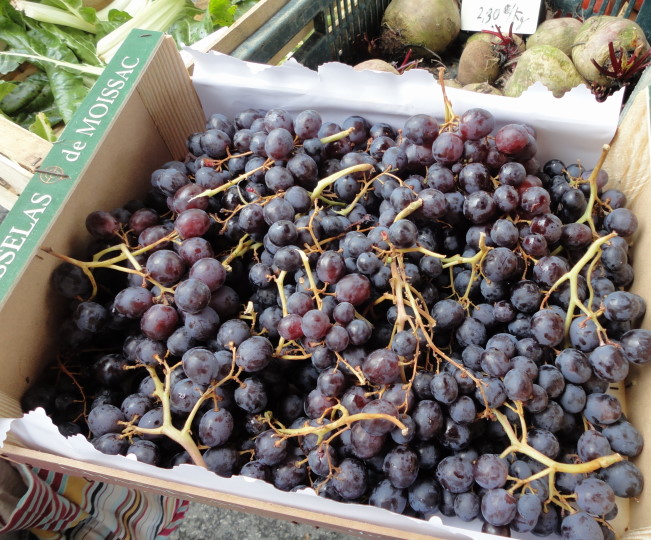
In any event, my jam making project started a little shaky…when I asked the Madame selling grapes at the Saturday Orthez market which was better for jam, Chasselas or Muscat grapes, she professed to having never heard of grape jam. However she agreed that the higher acidity of the Muscat made it a more likely choice, and offered a discount on a case (her normal price was 3 euro 80 the kilo….I felt a little bad taking the discount until I realized she had miscalculated the case price… in her favor).
Without my copy of “Confiture” by Christine Ferber, I had to improvise quantities but figured her general method would work: use about 40-50% the weight of the fruit in sugar, macerate overnight, then bring just to a boil and macerate again, then on the 3rd day, boil to consistency. With grapes, especially grapes with seeds, I figured I would need to puree and pass the jam through a medium chinois at some point; I chose to do it after the first boiling which seemed to work well.
The only other concern was whether or not I would need to add pectin or some other sort of gelling agent. When I make jam from cherries, for example, which have pretty low pectin levels as fruits go, I add a bit of green apple jelly to give the finished jam more body. Also, I remember my grandma making grape jelly and she always added pectin but then she put pectin in most jams and jellies, preferring a firm, almost slice-able texture. Me, I prefer a looser jam and don’t like to add anything that might change the flavor of ripe, beautiful fruit unless it is absolutely necessary. And a also guessed that pureeing the skins and seed in to the jam before the last boil would add a bit of body as well.
Anyway, the jam turned out nice, it needed about 20 minutes of hard boiling to come to consistency but has a very vibrant, fresh grape flavor (that is a great foil for barnyardy goat cheese, I can add from experience). When I passed the jam though my least fine chinois, I lost about a cup of seeds and skin but the jam is nice and firm without being too bouncy.
Here are some photos of the process…and look for an actual recipe soon.
